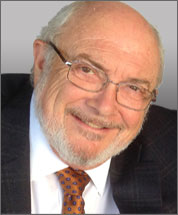What is a Job Architect? And how is it relevant to modern HR practices?

Guest writer Sonya Law walks readers through organizational structures in “What is a Job Architect? And how is it relevant to modern HR practices?”
“Be an organisation who is leading from the front …find out what a Job Architect is and why it is vital to high performance teams” …
- It plays a key role in ‘attracting, retaining and nurturing talent’
- Gives people a sense of belonging and understands the ‘relational aspects of teams and connection’
- Provides insights into the ‘employee experience’ and cultural awareness.
Job Architecture has been given more attention, post pandemic. For the reason that, people are wanting more from their jobs, getting paid is no longer enough. If a job does not meet their need for purpose and meaningful impact there is another job, just around the corner in this buoyant tight-talent market.
Those experiencing burnout are also opting for the eject button, to return to a role that suits their skill set and need for making a difference.
Job Architecture, acts as strategic backbone
“Connecting the entire Human Resources ecosystem for a consistent Employee Experience that, ultimately, impacts the customer experience. Job Architecture helps you: Develop and align talent segments, job families, capabilities, and accountabilities across the organisation.”
Job Architecture is work design
Post pandemic, we want to create workplaces as magnets for people to attract them to return to the office. We need to re-think and look at new ways that work can be done and job architecture enables us to do this. As well as think of the relational aspects, of how we collaborate and solve problems as a team.
Job Architecture is an underutilised part of our HR toolkit
Job Design is a HR fundamental but what is different about Job Architecture is that it is smart design that takes in design thinking principles. Which brings focus to the employee experience and the way work gets done in context of the whole eco-system.
Recently in Melbourne, Australia a Job Summit was held with business leaders such as CEO of Qantas Alan Joyce and Andrew Forest as well as many more, one of the key outcomes was the need to increase productivity. Job Architecture and work design affects every outcome that matters in a workplace, including performance and productivity. Full utilisation of our most expensive resource, being human beings is essential to achieving high rates of productivity and a way to do this is through Job Architecture.
The next points are based on an article written by Chris Sheedy for HRM Magasine and provides key insights into Job Architecture, by Professor Sharon Parker.
Job Architecture involves creating work for employees that is:
Stimulating
As human beings, we like to do things that are interesting, feel meaningful and have some variety.
Mastery
Allows for mastery, most people want to do their job well. So how can we encourage a sense of mastery? What are the things that help people to do their job? Role clarity, regular feedback, tap into their ‘native genius’ a term coined by Liz Wiseman, author of Multipliers, how the best leaders make everyone smart.
Agency
Agency, or autonomy, is based on the fundamental human need to have control over one’s own world. In a work context, this is the degree to which an employee feels they have control or influence over the work that they do and how they do it. Low agency also usually equates to low innovation. Agency is not anarchy. Its purposeful and goal directed. It requires a high level of trust throughout the organisation.
Relational
Impactful and relational aspects are considerations in Job Architecture. Clarity of what our job is and the impact on other jobs is fundamental. What is vital to high performance teams is the relationships and the connections with each other. The level of support we receive from within and from each other will give us our sense of belonging, make us feel safe and valued.
It creates a high level of accountability, responsibility, ownership and also reliability which are all fundamental in building trust and present in high performing teams. A strong relational culture, does not support toxicity and bullying and harassment, it supports high levels of engagement.
Tolerance
Builds tolerance; in 2022 there needs to be a focus on building tolerance for organisations to thrive. High work demands and burnout, leads to feelings of overwhelm and can be a key factor for people leaving their jobs and not taking up leadership positions. Thoughtful consideration needs to be given to how we build tolerance to increased work demands and recognise the early signs of burnout and support people’s mental health in their job i.e., coaching.
Strategic workforce planning is key:
The starting point, is understanding where your organisation is at, what it values and needs to execute the strategy in terms of the:
- Skills and capability
- Digital transformation
- Cadence of change
And assess the levels of fatigue in the organisation which will determine the receptivity to and success of change.
Having a workforce planning strategy in place that is considerate of your current workforce and job design and constraints will improve outcomes. A tool used to evaluate constraints in achieving the strategy is the PESTLE, which gives consideration to political, economic, social, technological, legal and environmental factors. This will be the best predictor of the future workforce required to execute your strategy. Then for Human Resources, the detailed work is in drilling down on job design/job architecture alongside, budgetary and growth expectations, and headcount.
As a senior leadership team, its good practise to complete quarterly:
- Talent Matrix (performance and potential)
- PESTLE is political, economic, social, technological, legal and environmental factors.
- Align people strategy (work force planning/Job Architecture) with business strategy.
How well we do in these areas will define the success in attracting and retaining talent in a tight market now and in the future and achieving our business goals.
‘Take care of your people and they will take care of business’
Did you enjoy this blog? Read more great blog posts here.
For our course lists, please click here.






